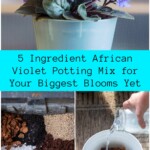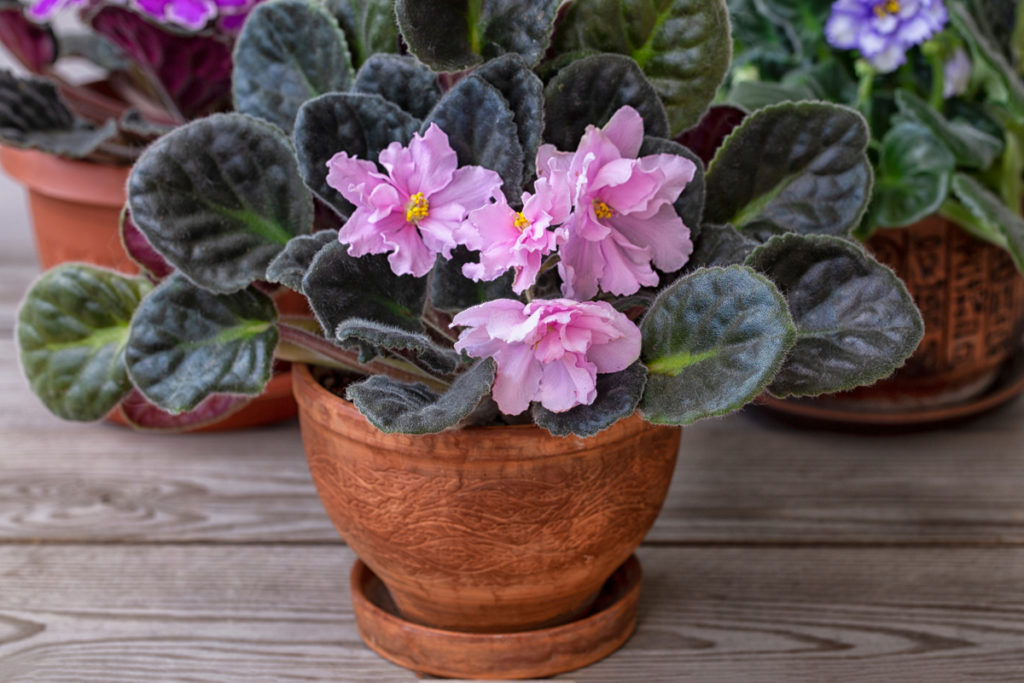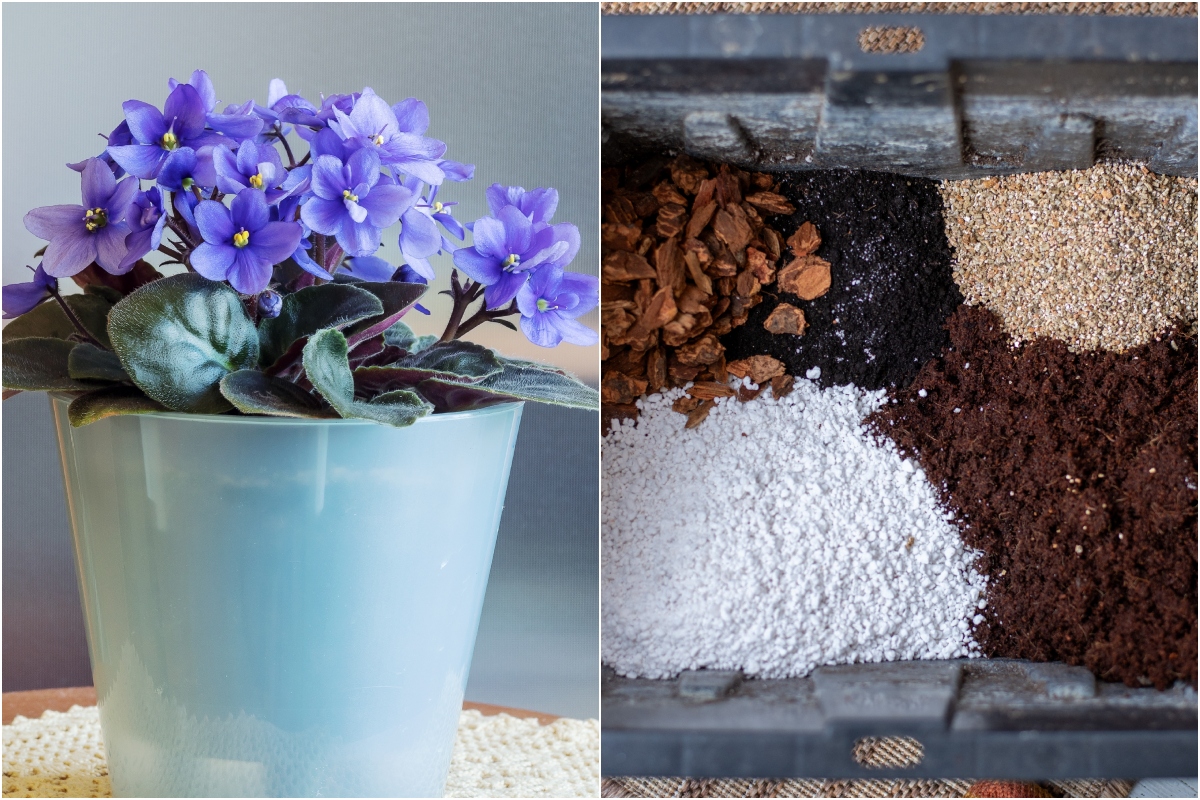
African violets have specific soil needs that can’t be met with all-purpose potting mix. Despite all the specialized African violet potting mixes there are, most still fall short. Over the years, I came up with my own mix that works beautifully.
I know my custom blend is key in growing African violets that bloom year-round.
Why All-Purpose Potting Mix isn’t All-Purpose
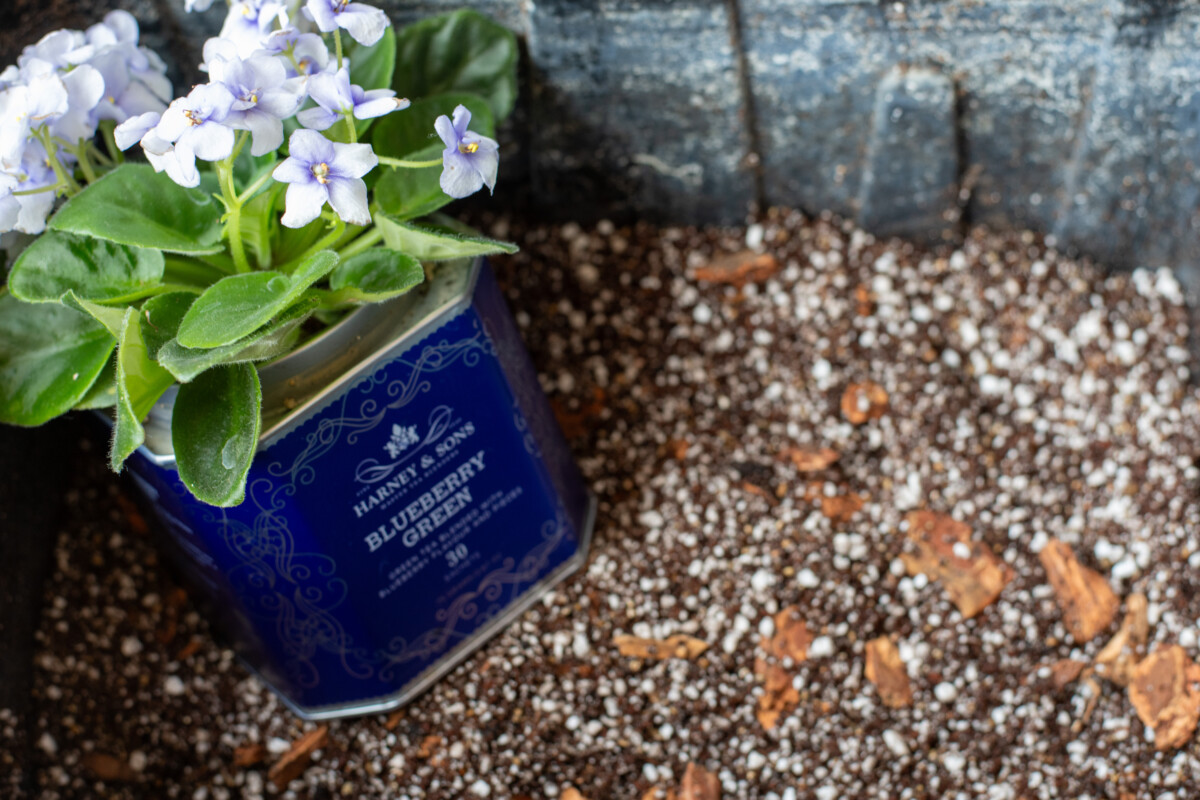
All-purpose potting soil has revolutionized our ability to grow and keep all sorts of plants from potted tomatoes, to Christmas poinsettias, to houseplants. It was developed back in the 1960s by a team of horticulturalists at Cornell University.
However, the problem is that it isn’t really all-purpose, at least not where houseplants are concerned.
The majority of houseplants we’ve cultivated are tropical epiphytes and lithophytes.
These types of plants grow symbiotically up another plant, usually trees, or a rock. You’ll find many are both epiphytic and lithophilic in the wild, happily growing wherever they gain a foothold. Or roothold, in this case.
Christmas cactus, monstera, philodendrons, orchids and African violets are just a few epiphytic plants.
Epiphytic plant roots aren’t naturally shallow root systems, designed to cling to the rough surfaces of trees or rocks, as well as take in water and nutrients. In the wild, the roots grow in little to no soil, but rather the organic matter that gets caught in them.
Strictly speaking, these types of plants don’t need to be grown in soil at all.
Many can be trained to grow on a piece of wood. But that’s an article for another day.
When you put these same plants in all-purpose potting mix, the weight of the it compresses the roots over time, making it hard for them to move water, nutrients and air effectively.
Another common issue is too much moisture. All-purpose potting soil holds too much moisture for African violets. They don’t tolerate wet feet and easily succumb to root rot.
So, What Do African Violets Need?
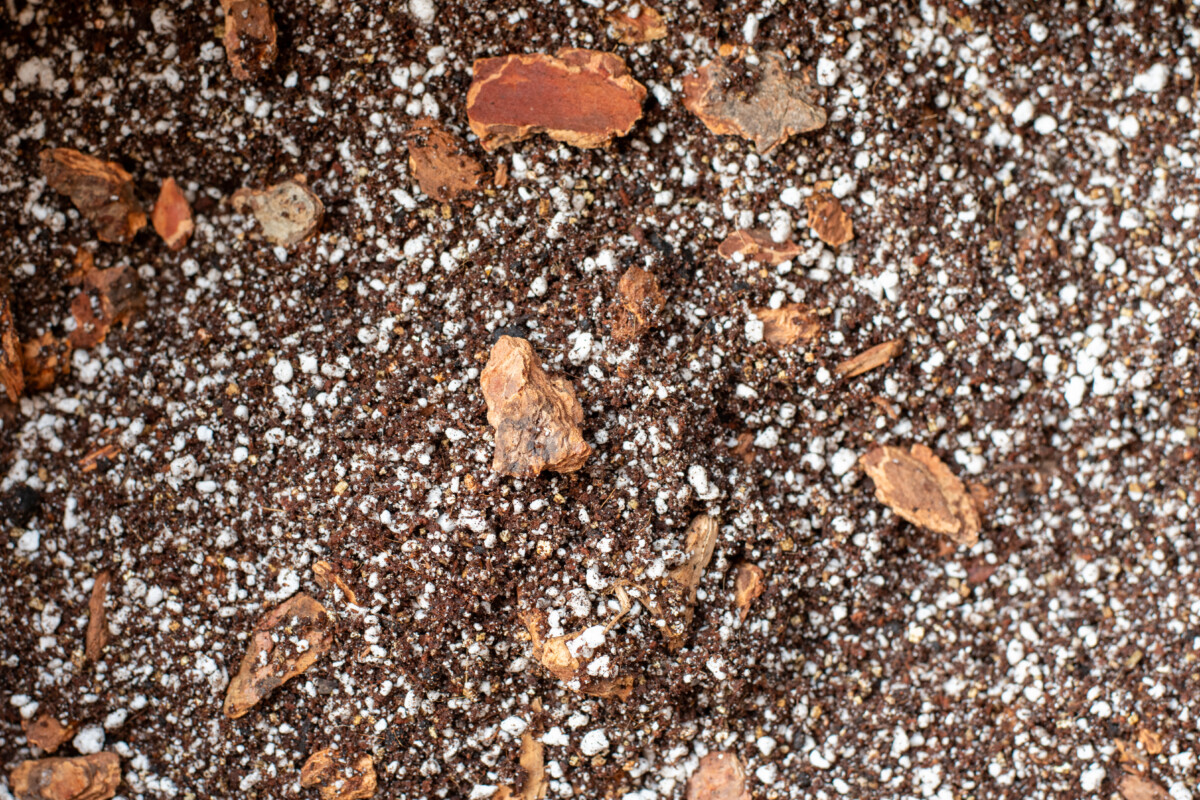
African violets need a featherweight potting mix that drains quickly while holding a bit of moisture. The soil needs to remain light, even when wet. African violets also prefer slightly acidic soil, between 5.5 and 6.2.
I’ve chosen the components for my African violet potting mix based on those needs, and you can easily find them at your local garden center or big box home improvement store.
Ingredients
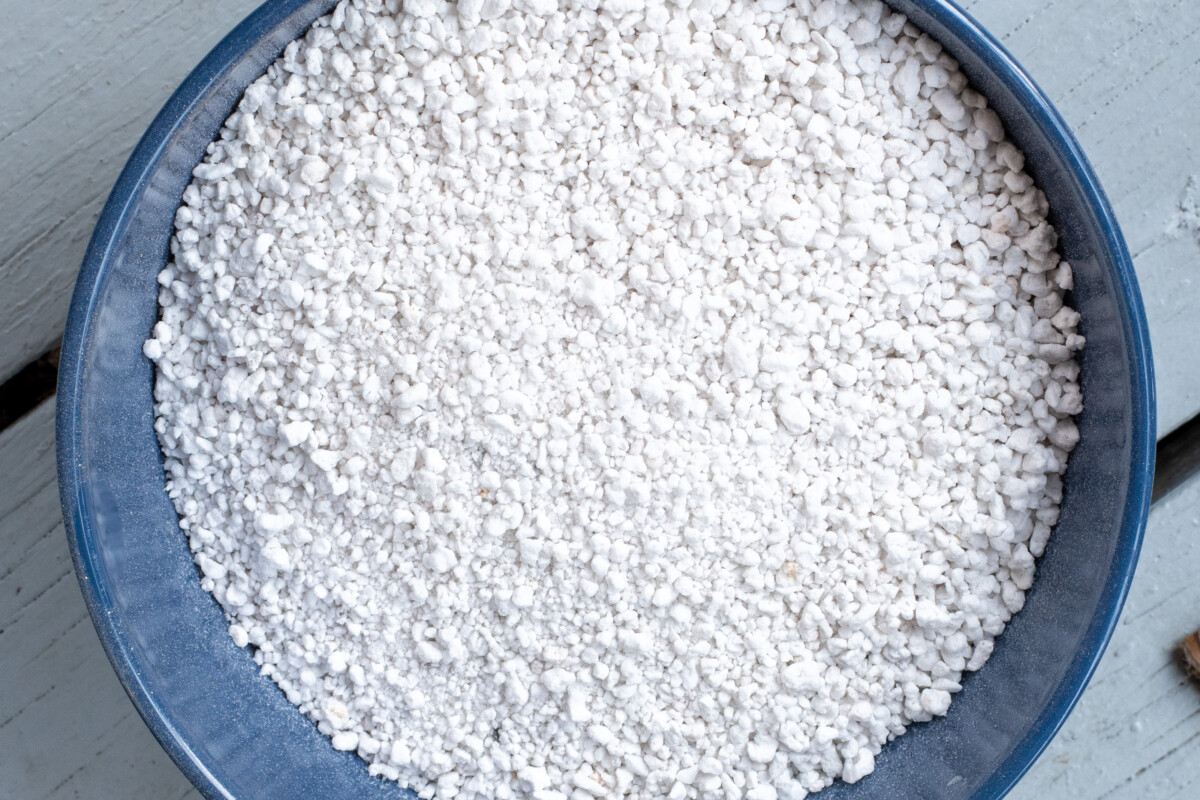
Perlite – Nope, it’s not Styrofoam, despite how it looks. It’s incredibly lightweight volcanic glass that’s been superheated with water – suddenly, poof, you’ve got perlite. (Think popcorn, only with obsidian.) It holds water and nutrients and creates air pockets.
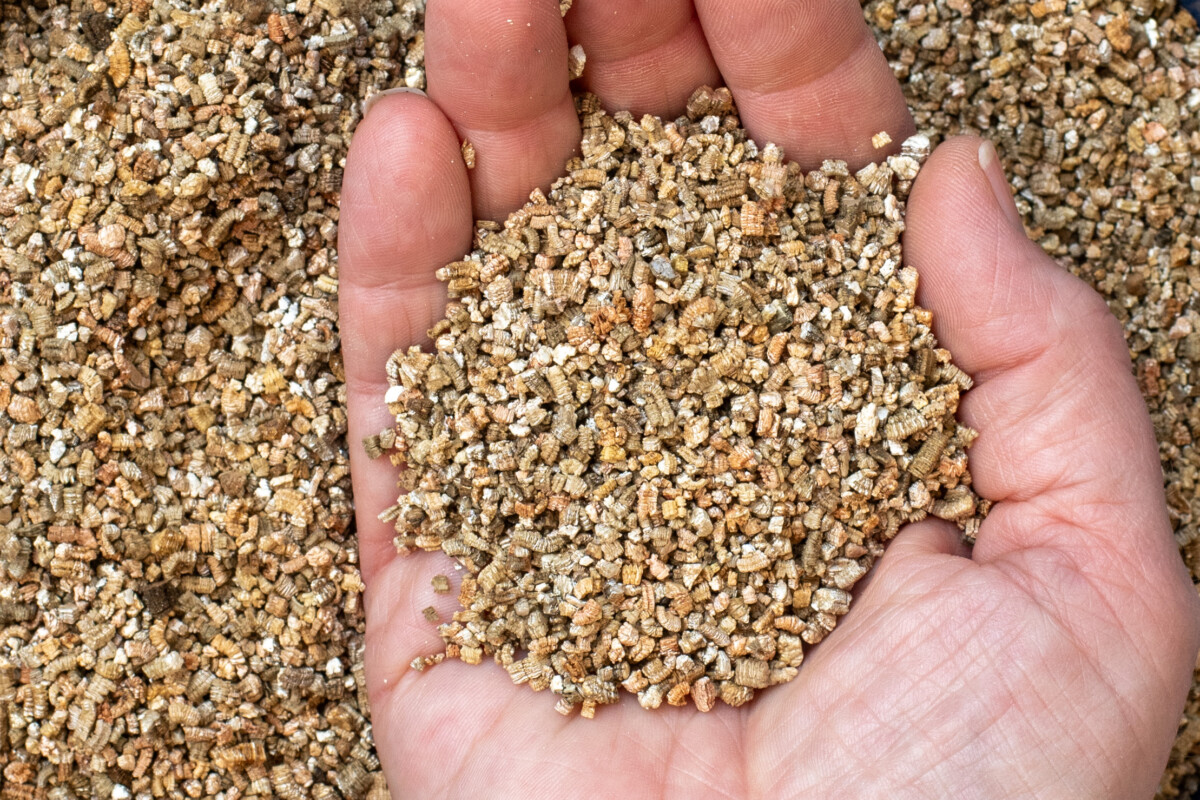
Vermiculite – Vermiculite is similar to perlite and serves the same purpose. However, it’s created with crystals containing biotite, rather than volcanic glass.
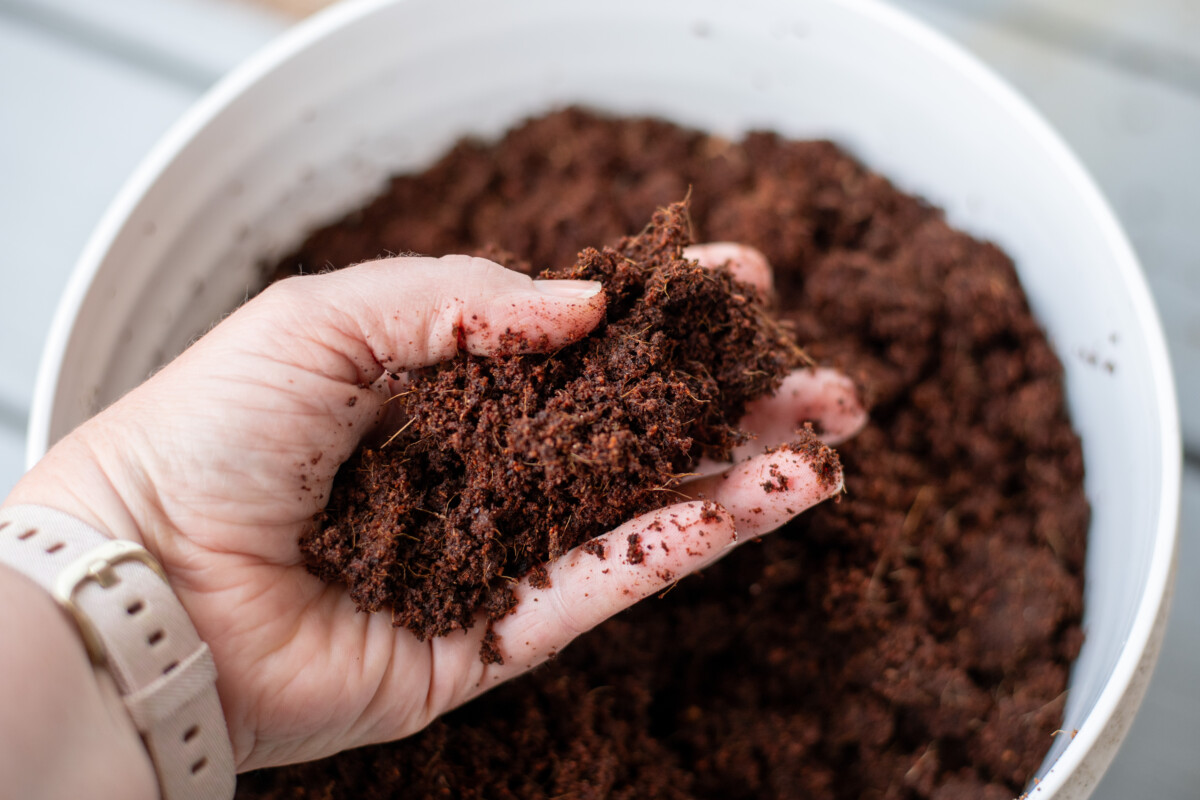
Coconut coir – (ground coconut husks) I used to use sphagnum peat moss as my organic matter, but with the ecological issues surrounding it’s harvest, I couldn’t, in good conscience, continue to use it. So, I switched to coconut coir. Coconut coir is less acidic than peat moss so we have to add something acidic.
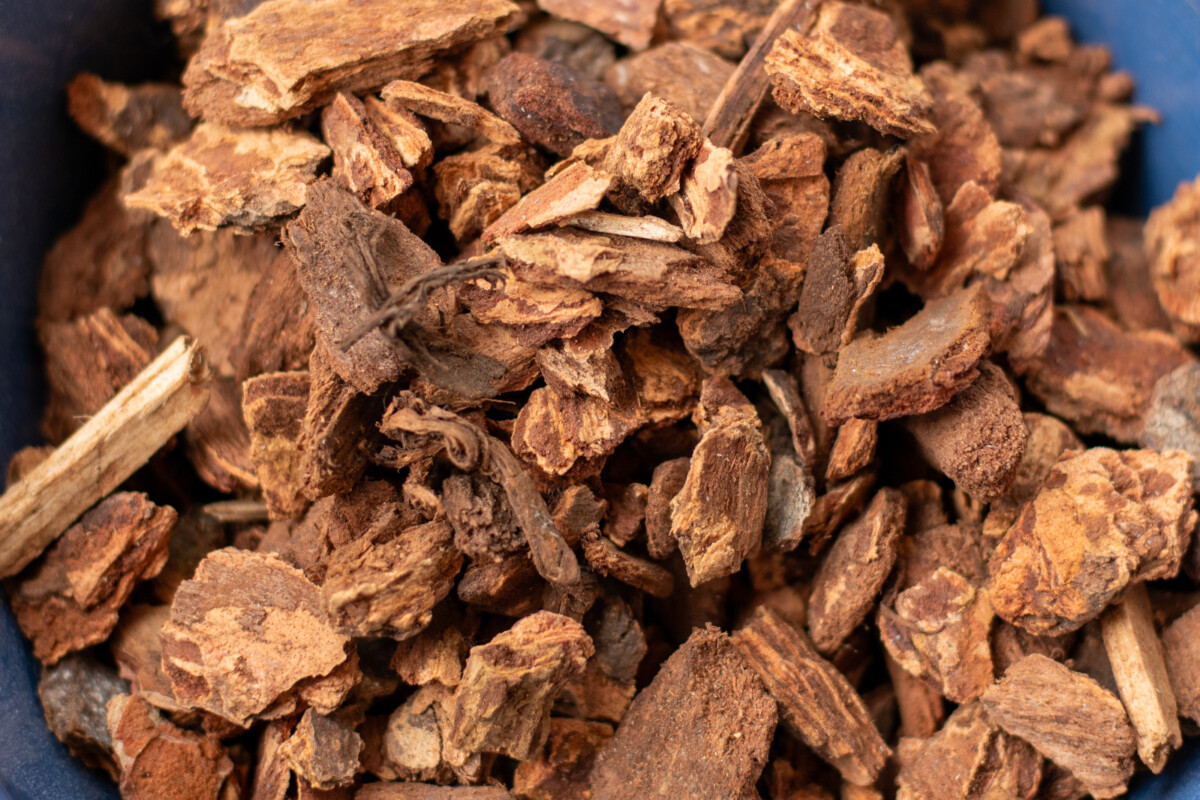
Fir bark – Fir bark is a common ingredient in commercial epiphyte mixes, especially for orchids. I use fir bark in my potting mix for several reasons: it slowly releases moisture to the plant, it’s acidic, and it gives the roots something to cling to in this fluffy, light mix.
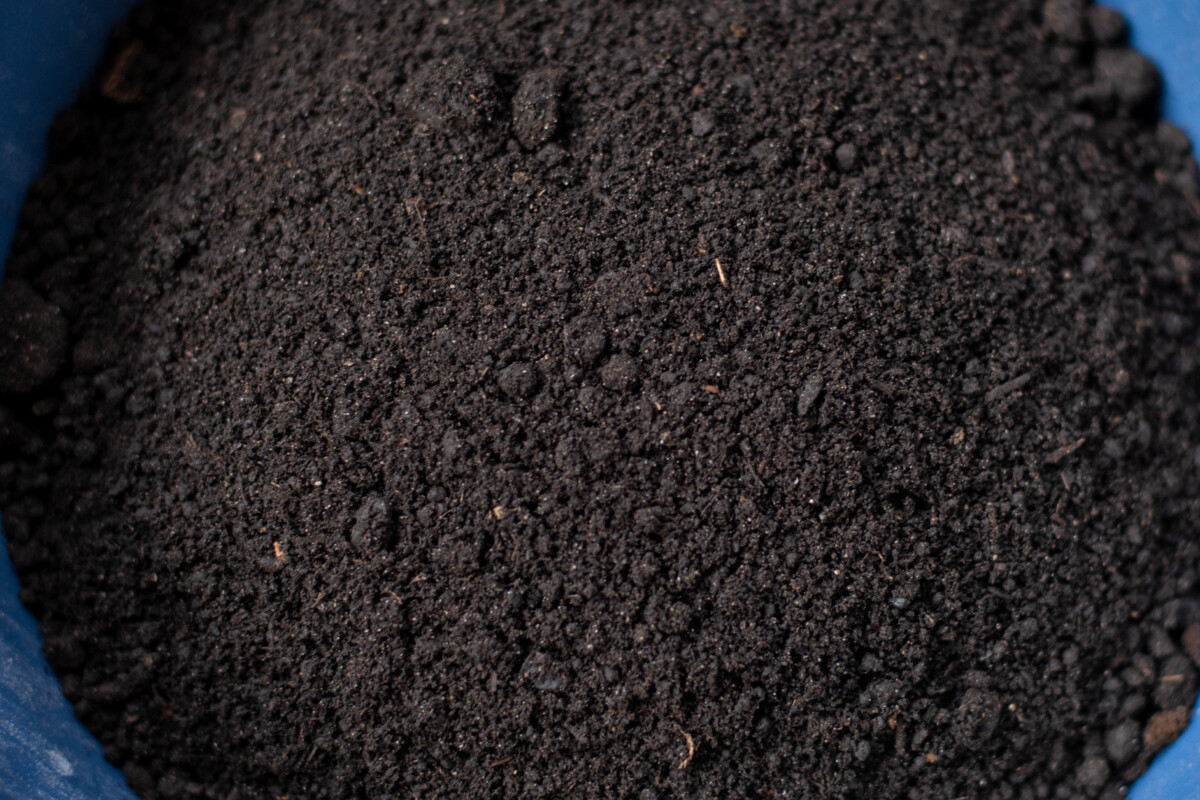
Worm castings – I add worm castings to all of my custom potting mixes, they provide soil structure and slow-release nutrients.
Related reading: Worm Castings – Nature’s Most Amazing Soil Amendment
Tools
- A bucket to pre-wet your coconut coir
- 1-cup measuring cup
- Gloves to avoid dirty hands
- A container to mix and store your African violet potting mix in
- A facemask or handkerchief (Perlite is quite dusty.)
- Warm water
- Liquid dish detergent
Let’s Mix Up Some African Violet Potting Mix
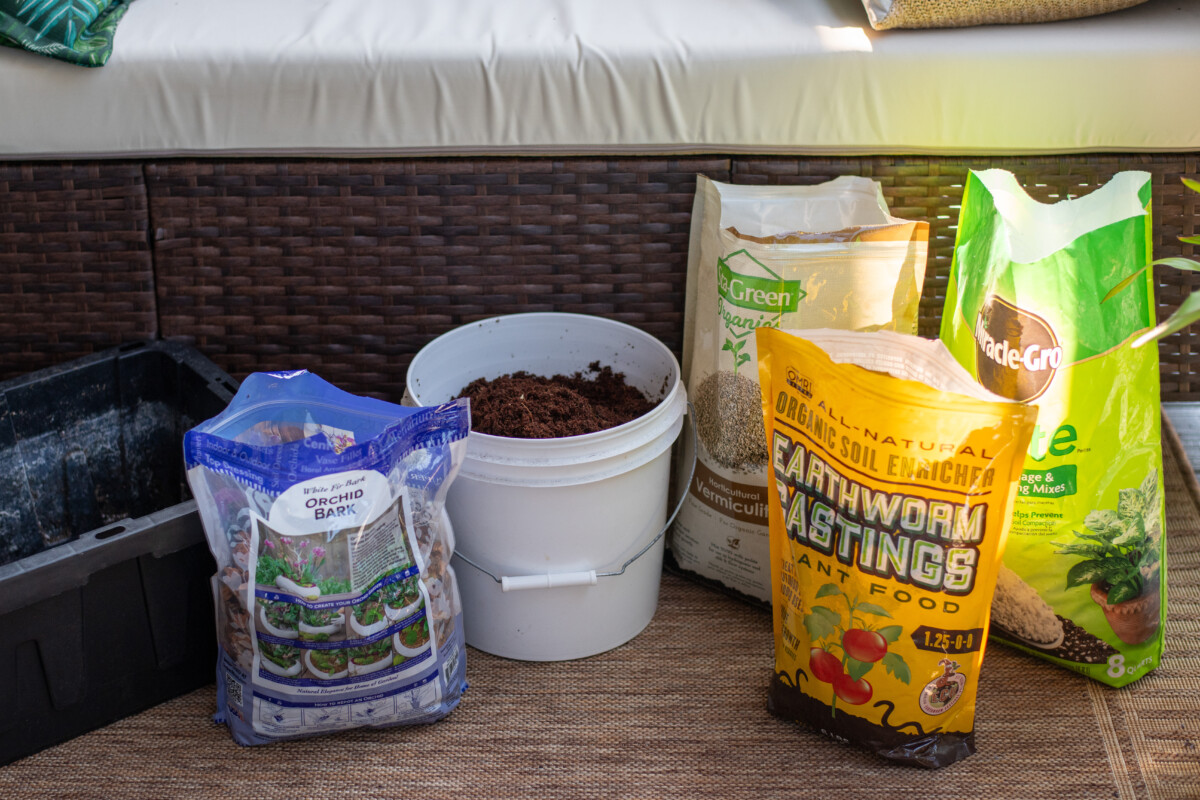
Prewet the Coco Coir
This is the messy part. Use warm water (no hotter than 100F) and the process will go faster. All told, it takes about 10-15 minutes.
Place your brick in the bucket. Mix a few drops of detergent into the water and slowly pour it over the brick. Coconut coir can be hydrophobic at first. The detergent breaks the surface tension of the water allowing the coconut coir to absorb the water. Depending on the size of your brick, you’ll need about four quarts of water. Let sit for 10-15 minutes.
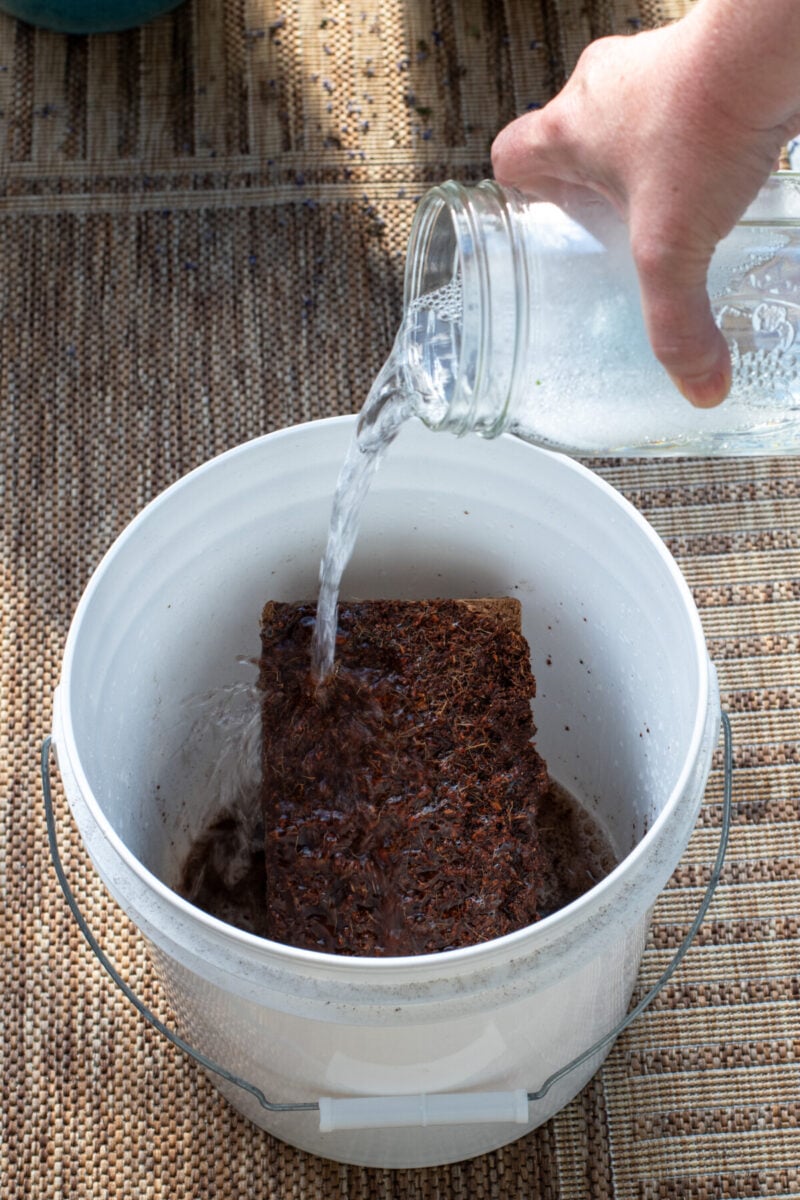
In the container you plan on storing your potting mix in, add the following.
- 4 cups of coconut coir
- 5 cups of perlite
- 3 cups of fir bark
- 1 cup of vermiculite
- 1 cup of worm castings
Mix well and cover with a lid to keep in moisture. It’s easy to mix up a larger batch using the 4:5:3:1:1 ratio.
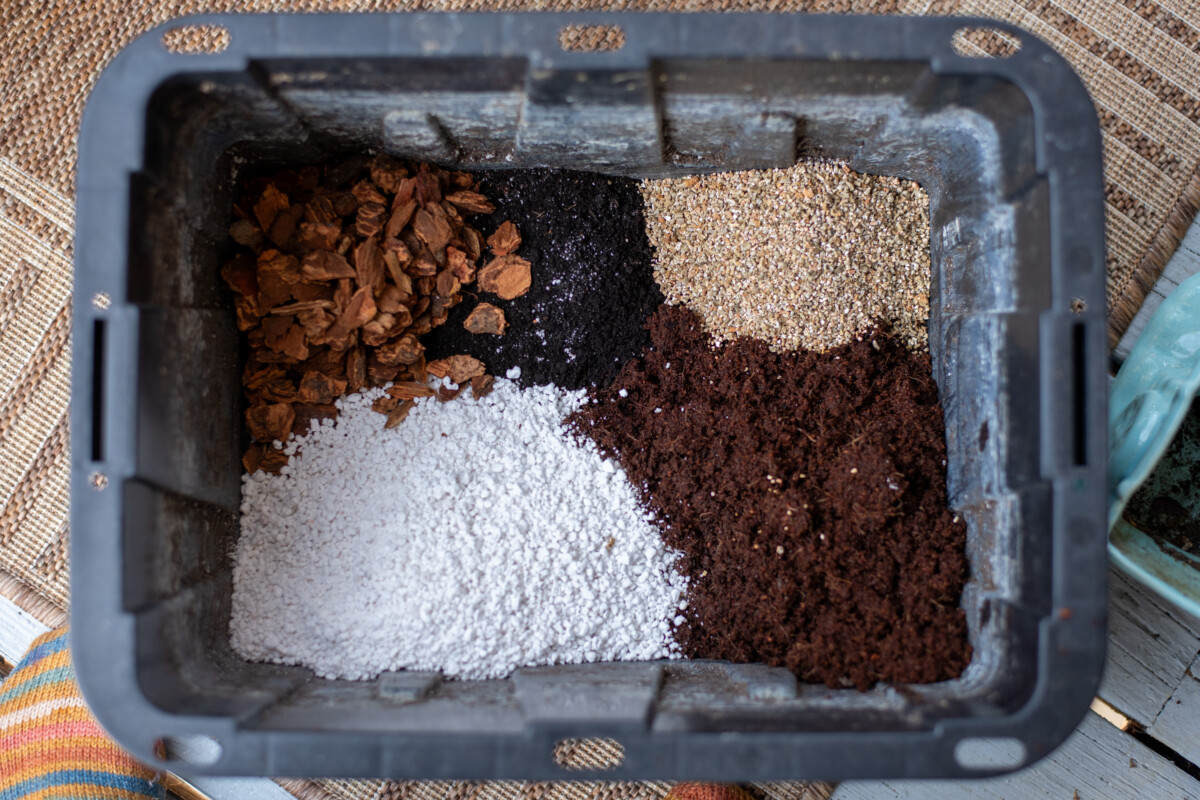
And don’t forget to repot your African violets twice a year. I usually mix up enough potting mix to do all of my violets at once when I repot them. If you have a violet with a long neck, I have provided detailed information on how to restart a violet and shorten the neck.
With this potting mix, I water my violets deeply, letting them drain completely (tip out any water left in the drip tray), and then let them dry out almost completely between waterings.
With good care and happy roots, your African violet can easily put out blooms continuously.
Read Next:

Get the famous Rural Sprout newsletter delivered to your inbox.
Join the 50,000+ gardeners who get timely gardening tutorials, tips and tasks delivered direct to their inbox.


